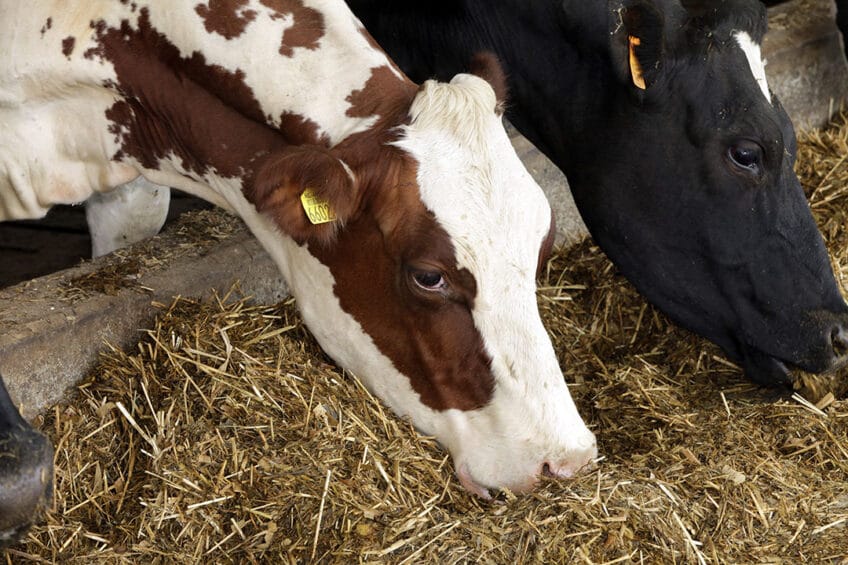
Optimizing Nutrition for Dairy Cattle to Boost Milk Production
Optimizing the nutrition of dairy cattle involves balancing energy, protein, minerals, and vitamins to meet their metabolic and milk production demands. A diet rich in forages, grains, and supplements supports better health, improved lactation, and high milk yield. This article explores essential dietary elements, feeding strategies, and management practices to maximize dairy productivity.
🐶 Pet Star
10 min read · 28, Jan 2025

Key Nutritional Components for Dairy Cattle
The diet of dairy cattle must supply sufficient energy, protein, fiber, and micronutrients to meet their physiological needs.
1. Energy Sources
Energy fuels the metabolic processes that drive milk production. It primarily comes from carbohydrates and fats.
- Forages:
- High-quality forages like alfalfa and silage are the backbone of a dairy cow’s diet.
- Fiber from forages aids in rumen health and proper digestion.
- Grains:
- Corn, barley, and oats provide easily digestible carbohydrates.
- Starch content from grains boosts energy levels.
- Fats:
- Supplementing with protected fats improves energy density without compromising fiber digestion.
2. Protein Requirements
Protein is crucial for milk synthesis and overall health.
- Rumen-Degradable Protein (RDP):
- Broken down by rumen microbes to create amino acids and microbial protein.
- Sources include soybean meal and canola meal.
- Rumen-Undegradable Protein (RUP):
- Bypasses the rumen and is absorbed in the small intestine.
- Important for high-producing cows.
3. Fiber and Rumen Function
Effective fiber maintains rumen function, promotes saliva production, and prevents acidosis.
- Ensure a balance of long and short fiber particles.
- Monitor the Neutral Detergent Fiber (NDF) content of the diet.
4. Minerals and Vitamins
Micronutrients play a critical role in health and milk production.
- Macrominerals:
- Calcium and phosphorus are essential for milk synthesis and bone health.
- Magnesium prevents grass tetany.
- Trace Minerals:
- Zinc, selenium, and copper support immune function and reproduction.
- Vitamins:
- Vitamin A aids vision and immune health.
- Vitamin D is essential for calcium absorption.
- Vitamin E supports oxidative stress resistance.
Feeding Strategies for Maximum Milk Production
Effective feeding strategies ensure that dairy cattle get the right nutrients in the correct proportions.
1. Total Mixed Ration (TMR)
- A balanced mix of forages, grains, proteins, minerals, and vitamins.
- Ensures consistent nutrient intake in every bite.
- Reduces selective feeding and improves efficiency.
2. Phase Feeding
- Adjusting the diet based on lactation stages:
- Early Lactation: High-energy diets to meet peak production demands.
- Mid Lactation: Balanced nutrition to sustain milk yield and replenish body condition.
- Late Lactation: Lower energy intake to prevent excessive weight gain.
3. Supplementation
- Use of feed additives:
- Buffers: Sodium bicarbonate helps prevent acidosis.
- Yeast Cultures: Enhance rumen fermentation.
- Bypass Fats: Increase energy density without affecting rumen microbes.
4. Water Availability
- Milk is approximately 87% water, making hydration critical.
- Provide clean, fresh water at all times to support feed digestion and milk production.
Common Challenges in Dairy Nutrition
- Rumen Acidosis:
- Caused by excessive grain or insufficient fiber.
- Symptoms include reduced appetite and milk fat percentage.
- Nutrient Deficiencies:
- Lack of calcium can lead to milk fever.
- Protein deficiencies reduce milk yield and quality.
- Overfeeding or Underfeeding:
- Overfeeding energy leads to obesity.
- Underfeeding affects health and productivity.
- Feed Contamination:
- Moldy or spoiled feed can cause digestive disturbances.
Monitoring and Management Practices
- Body Condition Scoring (BCS):
- Regularly assess cows’ body condition to adjust diets.
- Target BCS: 3.0-3.5 for lactating cows.
- Milk Composition Analysis:
- Monitor milk fat, protein, and somatic cell count to identify dietary issues.
- Ration Balancing:
- Work with a nutritionist to optimize rations.
- Use software tools to predict feed efficiency.
- Feed Testing:
- Analyze forage and grain quality regularly.
- Adjust rations based on nutrient composition.
Q1: What is the importance of forages in a dairy cow’s diet?
Ans) Forages provide essential fiber that supports rumen health, digestion, and milk fat production.
Q2: How does water intake impact milk production?
Ans) Water is vital as milk is mostly water. Adequate hydration improves digestion and ensures optimal milk yield.
Q3: Why are vitamins and minerals crucial for dairy cattle?
Ans) Vitamins and minerals support immune function, reproduction, bone health, and milk synthesis.
Q4: What are signs of nutrient deficiencies in dairy cattle?
Ans) Symptoms include reduced milk yield, poor body condition, and specific issues like milk fever or weak calves.
Q5: How can acidosis be prevented in dairy cows?
Ans) Provide sufficient fiber, avoid excessive grain, and include buffers like sodium bicarbonate in the diet.
Similar Articles
Find more relatable content in similar Articles

The Rise of Pet Physiotherapy and Hydrotherapy...
Pet physiotherapy and hydrothe.. Read More

Seasonal Care Guide: Protecting Pets from Extreme Weat..
A comprehensive guide for pet .. Read More

Social Media for Pets: Turning Your Pet into a Digital..
From playful puppies to charis.. Read More

Positive Reinforcement 2.0: Modern Training for Modern..
Positive Reinforcement 2.0 tra.. Read More
Explore Other Categories
© 2024 Copyrights by rPets. All Rights Reserved.